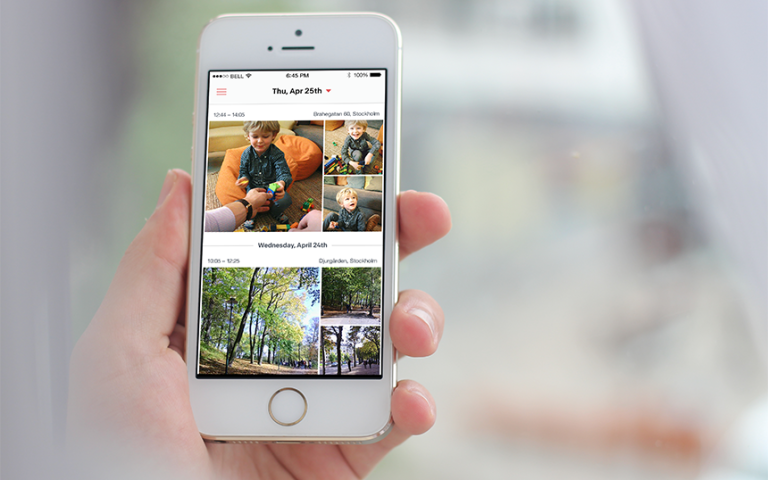Numerous studies and surveys conducted this year have stood in support for the use of wearables in the workplace. For instance, a survey commissioned by The Workforce Institute at Kronos and conducted by Harris Poll finds that workers around the world are ready to embrace wearable technology at work, with nearly three-quarters (73 percent) of online adults seeing at least one potential workplace benefit.
Earlier this year, we also presented what a futuristic workplace that has incorporated lifelogging at its core would look like on a typical day. Not only is this futuristic workplace already possible, terms such as BYOD (bring your own device) or BYOW (bring your own wearable) have also been coined and used by various organisations. Today, we discuss various facts, myths, predictions and uncertainties with regards to wearables in the workplace to explore if you are indeed ready to BYOW.
Facts
1. It is going to offer a lot more than its current state
Image credited to International Business Times
Already, many businesses are making use of wearable tech to enhance consumers’ experience. Virgin Atlantic is one example, as they explore the use of Google Glass to personalise Business Class passengers’ experience. By using Google Glass, staff can now offer more customised experience as they weave through the information presented to them about passengers’ dietary or other personalised preferences, before they even ask for it. Apart from enhancing customers’ experience, services such as Strap, which recently raised $1.25 million in funding, are also bumping up what wearables can offer since organisations can now use it to customise wearable apps to suit their internal human resource or other operational needs.
2. It’s not for every business

Image credited to Media Plow
Given that every business has many stakeholders involved – from consumers, to employees, to channel partners – it is important to evaluate if using wearables will add more value or cost to the organisation. In addition, the type of wearables used will of course differ from organisation to organisation. For instance, if you’re in the fitness industry, then perhaps wearing or allowing your consumers to wear bio-sensors from Electrozyme, which analyses data right down to your perspiration, will provide immense value. However, if your business is more sensitive in nature, then it is important to ban the use of wearables in the workplace altogether, even if it were for personal use.
Read more: How your business can use wearable technology now and Your sweat is full of data, and this wearable wants it
Myths
1. Wearables are equally well-received all around the world

Image credited to Exchange 3D
According to Techradar, wearables still seem to be struggling to find real purchase outside of the US – the US market accounts for well over half (70%) of the conversation about the technology, followed by the UK (7%), Canada (3%), Australia (2%) and India (2%). Perhaps the reason for this is the business environment in the US that has fostered and allowed more wearable tech companies to spring up and subsequently set up a largely American customer base. Whatever the reason, we do eagerly await the day when the whole world is receptive towards wearables!
2. Wearables in the workplace is all-taking and never giving
Image credited to Salesforce
Some people fear that the personal data gathered by these wearable devices will only be used against them. However, as studies have shown, adopting wearable tech in the workplace has provided various benefits for both the employees and the organisation as a whole. For one, fitness data can be used to drive insurance costs down. In addition, it can drive higher productivity that results in better bottom line. What other wearable tech benefits have you heard of in your workplace?
Read more: How To Prepare Your Business For Wearable Technology and Wearables in the Workplace
Question Marks
1. What about privacy and legal issues?

Image credited to IT Pro
It is especially complicated for organisations. As mentioned above, businesses have many more stakeholders that they have to be accountable to compared to individual consumers who use wearable tech. In addition, businesses are already over-confident with their basic security measures. With the introduction of wearable tech in the workplace, not only will businesses have to bear the added cost of governance, risk and compliance, as well as the tightening of data security, they will also have to iron out the privacy and legal issues that are still a blur today.
Read more: Wearable Tech at Work Poses Challenges for Businesses
2. What is the true value it brings to the organisation?

Image credited to Identropy
Yes, wearable tech in the workplace is going to bring us a whole lot more data than today. However, how much of this employee data pool is actually worth something? How are we going to measure them? How can they effect changes in the organisation? Already, the New York Times has raised many discussions on whether wearable tech is destined to fail, with some debaters saying that the data needs to be more relevant, while others mention that wearables have to be truly embedded in order for them to take off. Regardless, its value will be especially difficult to measure in the workplace.
Read more: Is Wearable Tech Destined to Fail? and Why Wearable Devices Will Never Be As Disruptive As Smartphones
If you enjoyed this post, you can also subscribe to our monthly newsletter!



